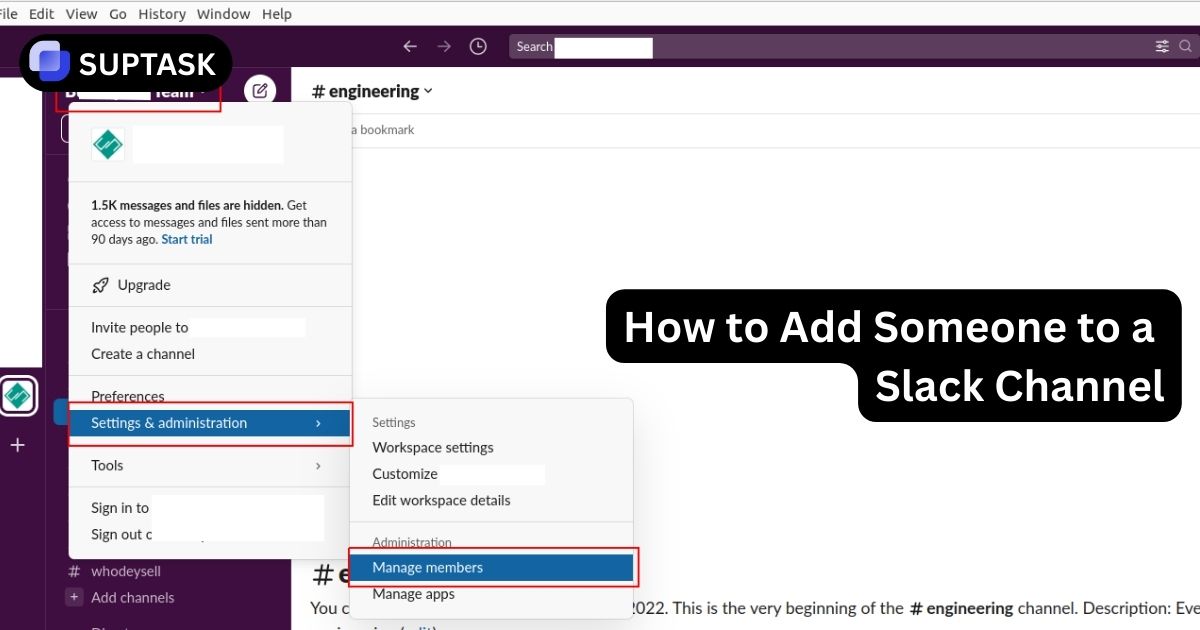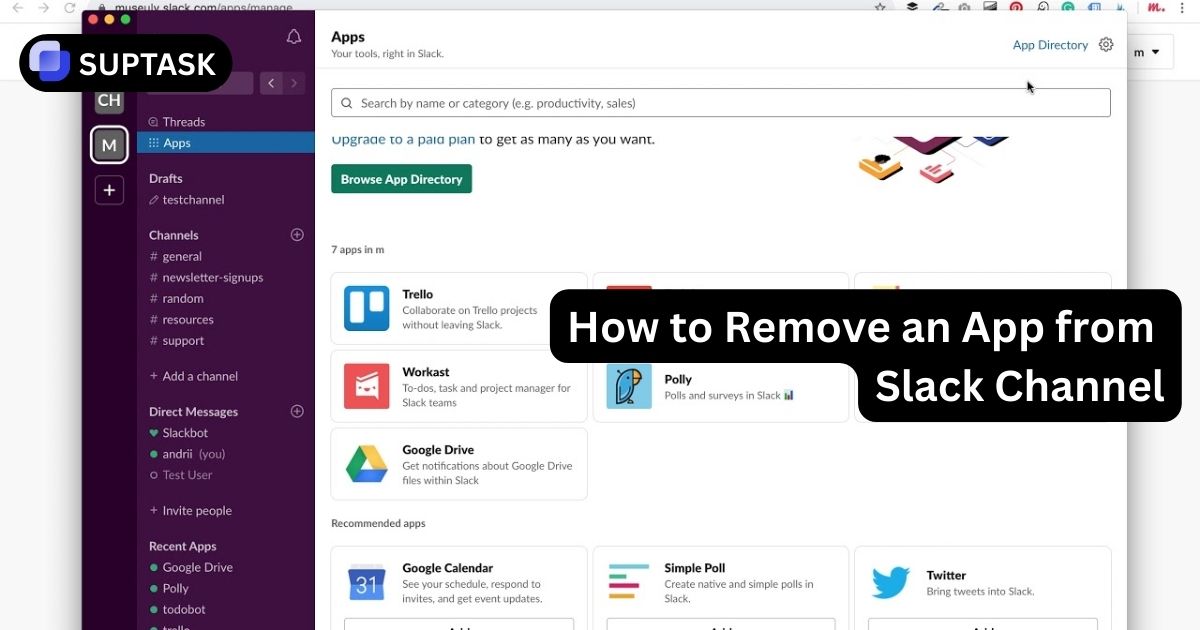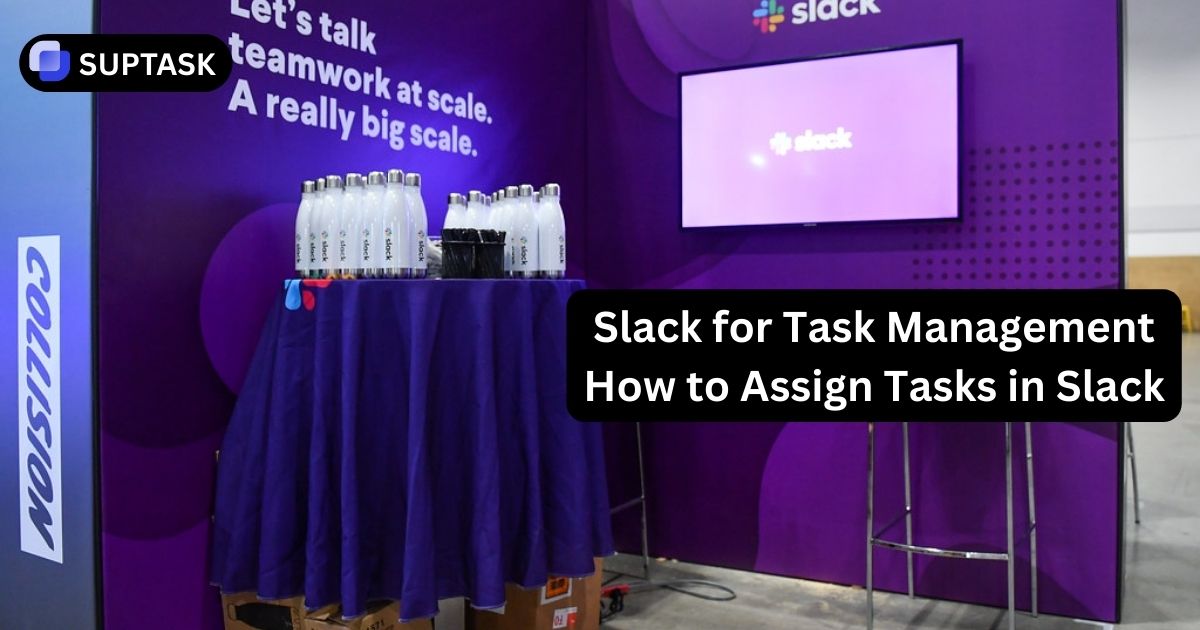Among the different collaboration applications, Slack and Microsoft Teams are still the most popular options that continue to be at the forefront in 2025. Both tools are packed with features that are great for productivity and making your workflow smooth, but, slightly, they address different sets of users.
This detailed Slack vs Teams comparison guide elaborates on video calls, messaging, pricing, integrations, UI/UX & more to help you find the best platform for your team.
Key Takeaways
- Microsoft Teams: The best fit for the companies, which are already heavy users of the Microsoft 365 suite. It provides the integration that is the most extensive as well as enterprise-level conferencing capabilities.
- Slack: The one that suits better the teams, who are looking for versatility, third-party integrations, and customization.
- Suptask: Brings up the level of Slack by incorporating the features of ticketing and customer support inside the Slack channels.
Slack vs Teams: Messaging

On the one hand, messaging is the area where Slack was always better, and in 2025 it is still the winner regarding speed and the simplest way of communication. On the other hand, Teams is all about being systematic.
Slack:
- Real-time messaging with public, private, and shared channels.
- User-friendly threads, reactions, and custom emojis for a casual and fun atmosphere.
- Search powered by AI with effective filtering options.
- Rich file-sharing compatibility with popular cloud services such as Google Drive, Dropbox, and Box.
Microsoft Teams:
- Conceptualized as “Teams” and “Channels,” thus manageable even for the biggest organizations.
- Threaded replies are a part of every channel, ensuring communication is formal and well-structured.
- Deep OneDrive and SharePoint integration for easy and smooth file handling.
- Security and privacy at the highest level come standard in the package.
Verdict: Slack is a platform full of life and never fails to surprise, whereas Teams gives you the impression of a serious and carefully planned company.
Slack vs Teams: User Interface
The user interface is more than just its appearance; it significantly influences the adoption and productivity of users.
Slack
- Fun, colorful, and highly customizable.
- Small teams can easily get on board with it.
- Custom themes, reactions, and emojis not only appeal but also make users feel part of the community.
Teams
- Clean, corporate, and uniform.
- The simplified design provides large organizations with the opportunity to focus.
- A little more challenging for non-Microsoft users to get used to the interface.
Pros and Cons
Both tools have pros and cons, lets check:
Slack Pros
- Super customizable interface.
- More than 2,000 third-party integrations.
- Powerful real-time messaging and search features.
- Works perfectly for distributed teams and startups.
Slack Cons
- File storage is limited if you are on a free plan (5GB).
- The software can become a source of distraction without clear usage guidelines.
Microsoft Teams Pros
- Perfect harmony with Microsoft 365 apps.
- Built-in video conferencing with advanced features.
- Professional and clear communication.
- Cheaper if your company is already on Microsoft 365.
Microsoft Teams Cons
- Not so user-friendly for collaboration with external partners.
- Slack has a more rigid interface than Teams.
- There is a small learning curve for those
Suptask: The Ultimate Slack Integration
For teams that use Slack, integrating Suptask can drastically improve productivity by embedding ticketing into the Slack workspace.
It's Suptask, a ticketing system within Slack. This system turns your Slack chat into a full-on ticketing operation, making it the best halp alternative avaliable. Your team and your client service will be better for it.
What can you do with Suptask? See below:
- Make, handle, and keep track of tickets in Slack
- Have a go-to place for teamwork and client help
- Use special channels, add-ons, support systems, alerts, and follow-ups
- Ensure your team handles support problems well, and stays efficient.
In short, Suptask makes Slack even better. It can make your team's ticketing smoother and teamwork stronger. All your support and teamwork can happen in the Slack workspace. That's thanks to Suptask.
Conclusion: Which Is Better?
The decision ultimately depends on your organization’s needs:
- If your team is already using Microsoft Office 365, Teams offers the best integration and a more cohesive experience.
- If you’re looking for flexibility, third-party integrations, and a customizable interface, Slack is likely the better choice.
For 2025, both platforms continue to innovate, with new integrations, features, and pricing changes that can help teams collaborate even more effectively.













